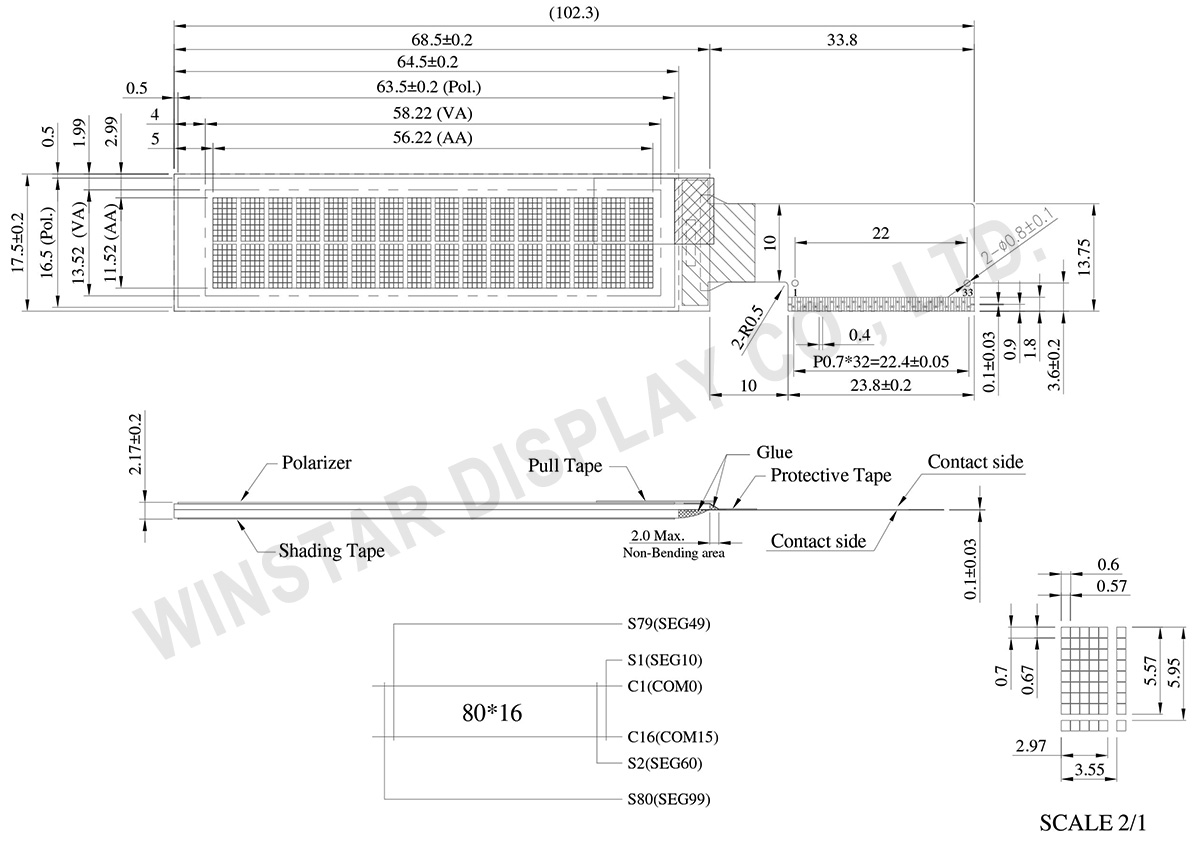El módulo de pantalla OLED 16x2 COG (Modelo: WEO001602C) utiliza un diseño COG (Chip On Glass), ofreciendo una solución de visualización de alto rendimiento y confiabilidad. Este módulo OLED es conocido por su excelente calidad de visualización y durabilidad, lo que lo hace adecuado para una amplia gama de aplicaciones.
Las dimensiones del módulo son 68,5 x 17,5 mm, con un grosor de 2,17 mm. El área activa es de 56,22 x 11,52 mm, con un tamaño diagonal de 2,26 pulgadas. Equipado con el IC controlador SSD1311, el WEO001602C admite una biblioteca de caracteres integrada, que incluye conjuntos de caracteres ASCII, en inglés, europeo y japonés. Cada carácter está compuesto por 5x8 píxeles, garantizando una visualización detallada y clara.
El módulo muestra 2 líneas, con la capacidad de mostrar 16 caracteres por línea. Gracias a la tecnología OLED autoemisor, este módulo no requiere retroiluminación, lo que lo hace más ligero y delgado, además de mejorar el contraste hasta 10.000:1. También ofrece un ángulo de visión ultra amplio de hasta 175 grados, garantizando una calidad de visualización uniforme desde diferentes ángulos. Además, el módulo se caracteriza por un bajo consumo de energía y un amplio rango de temperatura de funcionamiento, mostrando gran versatilidad.
El rango de temperatura de funcionamiento del WEO001602C es de -40°C a +80°C, con un rango de temperatura de almacenamiento de -40°C a +85°C, permitiendo una operación estable en condiciones extremas. El módulo funciona con un rango de voltaje lógico de 2,4V a 3,3V, con un valor típico de 3V, y utiliza un método de control con ciclo de trabajo de 1/16.
Además, el WEO001602C admite múltiples opciones de interfaz, incluyendo la interfaz paralela de 8 bits 6800/8080 y las interfaces serie I2C/SPI, ofreciendo flexibilidad de conexión para cumplir con diferentes requisitos del sistema. La serie de módulos también ofrece varias opciones de Circuito Impreso Flexible (FPC) para satisfacer las diversas necesidades de los clientes.
Con su excelente calidad de visualización, amplio rango de temperatura de funcionamiento y opciones de interfaz flexibles, el módulo de pantalla OLED WEO001602C es una opción ideal para reemplazar módulos LCD tradicionales. Recomendamos considerar el uso de este módulo OLED 16x2 para mejorar el rendimiento de visualización de su producto, alcanzando una calidad de imagen superior y un menor consumo de energía.
 Opciones de FPC
Opciones de FPC







